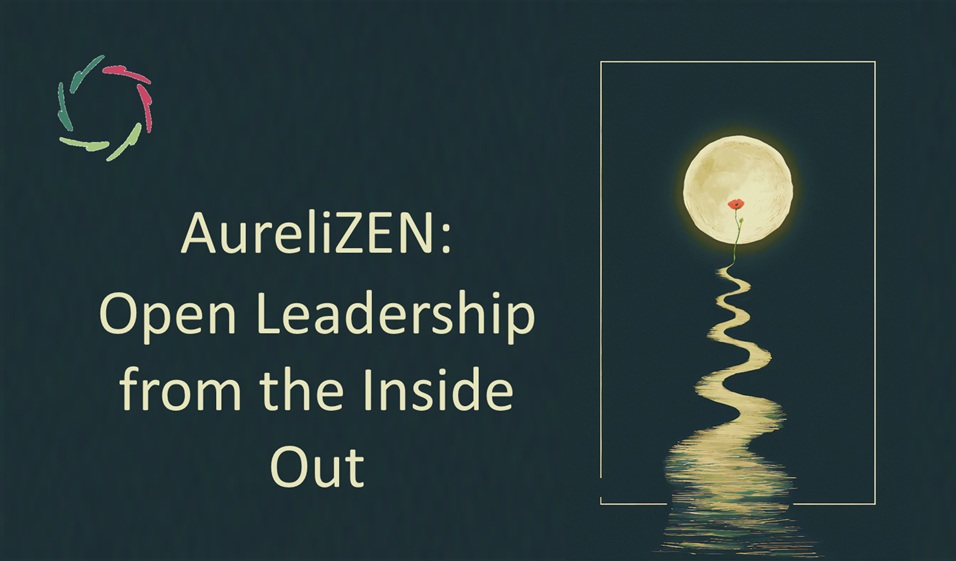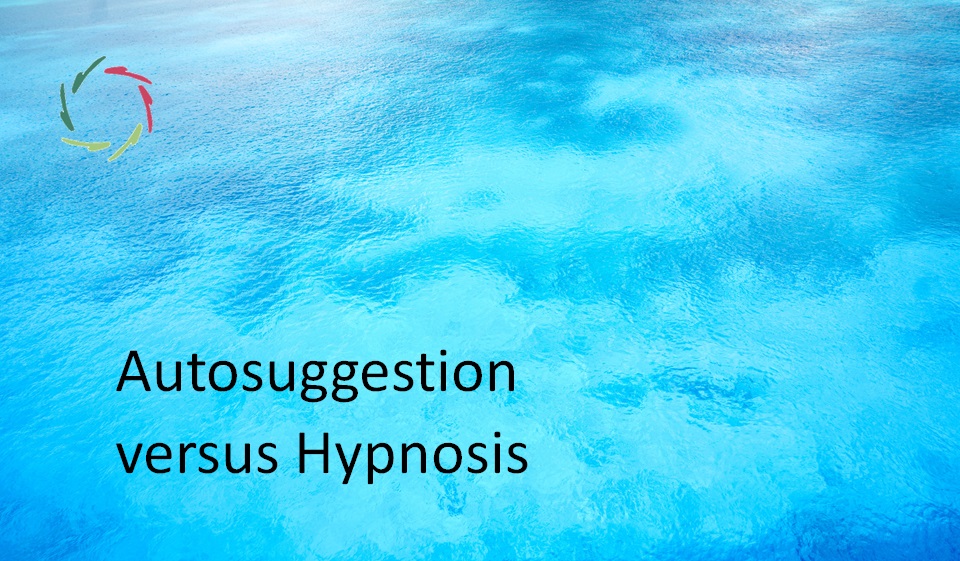AureliZEN: 5 – Open Leadership from the Inside Out

[For an introduction to the AureliZen series, goto AureliZEN: a Seminar Series for Deep Growth.]
Leadership is poetry, not just management
Many people think of leadership as a set of techniques — skills that can be learned and applied to manage people effectively. Real leadership is something much deeper. It is not just about what you do but about how you are.
A good manager keeps things running. A true leader creates space for growth, inspiration, and meaningful change. Leadership is not about control; it is about presence, openness, and the ability to invite others into their own potential.
This seminar explores leadership as a process of self-discovery. Instead of trying to ‘become’ a leader in the traditional sense, we will focus on how leadership naturally emerges from within when we are fully present and engaged with life.
This aligns with the idea of deep autosuggestion, where real transformation happens beyond the level of conscious control.
Leadership is an inner process
Most leadership programs focus on outward behavior: how to give feedback, how to influence, and how to manage teams. These things matter, but they are secondary. The real source of leadership is internal.
Before you can lead others, you must first be able to lead yourself. This means:
- Developing deep inner stability.
- Understanding your own motivation before trying to motivate others.
- Cultivating presence so that others feel safe and inspired around you.
Leadership is not about techniques. It is about the energy you bring into every moment.
Open leadership: strength and gentleness together
A true leader is both strong and gentle.
- Strength means clarity, confidence, and the ability to hold space for others.
- Gentleness means openness, the ability to listen deeply, and the willingness to be vulnerable when needed.
The best leaders do not impose authority. They create an atmosphere where motivation, trust, and natural movement emerge effortlessly.
This idea is central to the AURELIS approach, where real influence comes from openness, not force.
YogaZen practice: Leadership as an Open stance
[see: YogaZen How-to]
- Standing tall, arms reaching upward.
- This movement is not about power or dominance. It is about asking:
- Am I ready to lead?
- What is required of me to be worthy of this role?
- How can I serve rather than control?
Lesson: Leadership is an invitation — to yourself and those around you.
The ego and the total self in leadership
Leadership is not about ego, but it is also not about suppressing yourself.
- The ego is the crystallized, conceptualized self — it is useful, but it must not dominate.
- True leadership comes from the total self — the part of you that is deeply connected to life beyond roles and labels.
A leader who operates only from ego is rigid, defensive, and easily threatened. A leader who operates from the total self is open, adaptable, and deeply trusted by others.
Reflection: Where in your leadership does the ego get in the way of your total self?
Leadership and boundaries: meeting yourself at the edge
You only discover your leadership in moments of challenge.
A real leader is comfortable standing at the edge — the place where growth happens, where old patterns break down, and where something new emerges.
- Some people fear the edge and avoid it.
- Others push too hard and force movement instead of allowing it to unfold.
- A true leader expands boundaries naturally, for themselves and for those they lead.
Reflection: Where in your life do you avoid pushing your boundaries?
Metaphor: A leader expands their comfort zone not just for themselves but for those who follow.
YogaZen practice: Exploring leadership at the edge
- Gentle neck rotations — moving just beyond the comfort zone.
- This symbolizes the necessity of turning your vision beyond what is immediately familiar.
- The key is not to strain but to explore how far you can go with ease.
Lesson: A leader is someone who stretches boundaries — not through force, but through natural expansion.
Discipline vs. control in leadership
- Discipline is essential in leadership — but control is not the same as discipline.
- A good leader cultivates:
- Inner discipline — the ability to stay focused and motivated.
- External discipline — guiding others without resorting to coercion.
Control, on the other hand, blocks deep motivation. When you apply force, natural movement stops.
Key insight: A leader works with motivation, not against it.
YogaZen practice: Discipline without force
- Forward bend with one leg extended.
- The goal is to move into the stretch without force — finding the balance between effort and natural movement.
- This mirrors how a leader must balance discipline with freedom.
Lesson: If you push too hard, the body resists. If you invite gently, it responds. The same is true for leadership.
Leadership is saying YES
- True leadership is about finding the YES in every situation.
- This requires Open perception — the ability to see beyond limitations.
- Even when a situation seems difficult, an Open Leader looks for the level at which YES exists.
Practical exercise: Before saying ‘no,’ pause and ask: “At what level can I say YES?”
Reflection: How often do you default to ‘no’ when ‘yes’ might still be possible at another level?
YogaZen practice: Expressing YES in the body
- Seated posture, stretching the upper body upward — expressing openness to YES.
- The key is to feel the expansion and invitation in the movement physically.
Lesson: Leadership is about openness, not restriction.
The leader is a symbol for the group
- A true leader does not just act as an individual — they act as a living symbol for the group they lead.
- This means a leader’s presence, values, and attitude deeply affect the collective.
- A Open Leader embodies the vision so that others can align with it.
This concept is central to open leadership, where leadership is a process of deep engagement with both self and others.
YogaZen practice: Sitting as a living symbol
- Sitting in stillness, embodying leadership.
- This is not a pose of control but one of deep presence and openness.
- This symbolizes how a leader leads not by force but by simply being.
Lesson: When a leader is fully present, their presence alone motivates others.
Invitation to step into open leadership
Leadership is not about techniques. It is about who you are becoming.
In this seminar, participants will:
- Experience leadership from the inside out.
- Discover how to balance strength and openness.
- Learn how to motivate without force.
- Find their unique leadership style.
A leader is always on the path, always growing, always learning.
Final reflection: What kind of leader are you becoming — and how can you invite that leadership to emerge naturally?
―
Addendum: Q&A about this module by Lisa
(Note that you can also ask Lisa questions about your personal situation.)
- How is Open Leadership different from traditional leadership?
Traditional leadership often focuses on control, authority, and external techniques for managing people. Open Leadership, however, emerges from within. It is about presence rather than power, invitation rather than coercion. An Open Leader does not impose direction but creates space where others can find their own motivation and growth. Strength and gentleness go hand in hand—offering clarity while also deeply listening. Open leadership is about inspiring others to lead themselves.
When have you felt most naturally drawn to follow someone? What qualities did they embody?
- Why does leadership begin with self-leadership?
You cannot guide others toward something you haven’t cultivated within yourself. Self-leadership means developing inner stability, understanding your own motivations, and being present in every moment. Without this foundation, leadership becomes performance rather than authenticity. True leadership arises when you are deeply connected to your own inner movement—your values, intentions, and way of being. Others sense this and respond to it naturally.
In what areas of your life do you fully lead yourself? Where do you still look for external direction?
- What does it mean to balance strength and gentleness in leadership?
Strength is often associated with decisiveness and authority, while gentleness is linked to listening and openness. But true leadership is not an either/or—it is a balance of both. Strength without gentleness can become rigid control; gentleness without strength may lack direction. The best leaders create trust by being confident yet humble, offering structure while allowing space for growth. They embody clarity without needing to dominate.
Which comes more naturally to you—strength or gentleness? How can you cultivate the other?
- How do boundaries shape leadership?
Leadership requires stepping into the unknown, expanding personal and collective boundaries. Some avoid the edge of their comfort zone, while others push too hard, forcing movement that isn’t ready. Open Leadership means meeting the edge with curiosity rather than fear or force. It is about allowing growth to happen naturally rather than trying to control it. True leaders stretch their boundaries—and, in doing so, create space for others to do the same.
Where in your leadership do you tend to avoid the edge? Where do you push too hard?
- What is the difference between discipline and control in leadership?
Discipline is about focus, consistency, and commitment. It is an internal practice that strengthens leadership from within. Control, on the other hand, often comes from fear—an attempt to force outcomes rather than allowing natural motivation to arise. A good leader maintains discipline but does not impose rigid control, instead fostering an environment where growth and movement happen organically.
Do you lead with discipline or control? How does this affect those around you?
- Why is saying ‘YES’ important in leadership?
An open leader looks for possibilities rather than limitations. Even in difficult situations, there is often a way to say ‘yes’—whether by shifting perspective, finding a different approach, or discovering an underlying opportunity. This doesn’t mean saying ‘yes’ to everything, but rather cultivating a mindset of openness. True leadership involves recognizing where movement is possible and guiding others toward it.
Where in your leadership do you default to ‘no’ when a deeper ‘yes’ might be possible?
- How does a leader serve as a symbol for the group?
Leadership is not just about actions—it is about presence. A leader embodies the values, vision, and direction of the group. People look not just at what a leader does but at who they are. This means that leadership is as much about inner work as external action. A leader’s authenticity, clarity, and openness influence the collective more than any strategy or plan.
What qualities do you naturally embody as a leader? How do they shape those around you?


